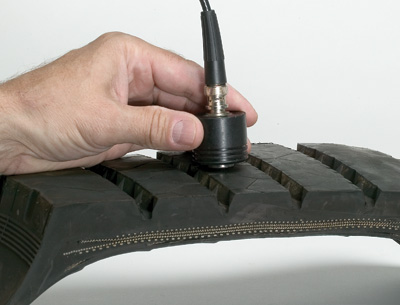精确超声测厚 - 其它材料
Other Materials
In addition to measuring common metals and plastics, ultrasonic gauges can be used in a wide variety of other applications, only a few of which are listed here.

Rubber products - Sound attenuation in rubber is typically high in comparison to other materials, but thickness can usually be measured with high-penetration gauges. Common applications include wall thickness of rubber tubing, total thickness and depth of reinforcement in rubber conveyor belts, and tread thickness in tires.
Ceramics - Most structural and electronic ceramics are well suited for ultrasonic gauging, including ceramic tubing, containers, turbine blades and valves, and ceramic coatings. Ultrasonic gauges can also be used for testing elastic modulus measurement by means of sound velocity measurement.
Glassware - Glass is typically highly transmissive to sound waves, and glass containers, small-diameter glass tubing, scientific glassware, light bulbs, glass coatings, and similar products can all be measured.
Liquid level - Ultrasonic gauges can frequently measure the height or depth of liquids inside sealed containers and in situations where traditional methods such as dipsticks or calibration floats cannot be employed. Go/no go techniques can often be used to determine the presence or absence of liquid at a particular point in a tank or other container.
Soft contact lenses - It is possible to ultrasonically measure the thickness of soft contact lenses, which are difficult to measure mechanically without distorting their shape and also calculate base curve from an ultrasonic measurement of sagittal height.
Wax patterns - The thickness of the wax patterns used to create molds for turbine blades and similar precision products in the lost wax casting process can be measured, including the thickness of wax over ceramic cores.
Biological samples - Thickness of soft tissue such as skin, muscle, fat, and blood vessel walls can frequently be measured in biomedical research applications.